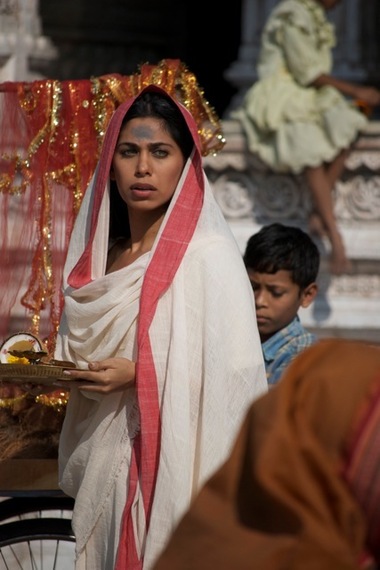I had the privilege of making a film that changed the way I see things in life. Bhopal: A Prayer for Rain, which is being released next month, is inspired by the world's worst industrial disaster which took place on December 3rd, 1984 when a pesticide leak at the Union Carbide plant in Bhopal, Central India killed more than 10,000 people in a few hours.
Growing up, I heard about this terrible tragedy and that people are still suffering nearly 30 years later as a result of what happened. I wanted to bring awareness of this to the rest of the world, so something could be done to stop the suffering. When I was cast in the film, I was thrilled that through the project, I could finally help spread the word about something I had long felt passionately about.
As part of my preparation for the role, I began researching in depth and I came across a sepia toned photo taken at the time of the disaster that showed a little girl comforting her toddler brother. The girl was looking straight at the camera, sitting next her dead parents. This little girl's eyes made me uncomfortable, so much that I couldn't get her out of my head. When I visited Bhopal, I asked around to see if anyone knew that little girl. I imagined her alive and making a good life for herself. I never found her. Maybe she got lost in time. Throughout the making of this film, I felt that little girl's eyes watching me and asking me to tell her story to the world.
The Union Carbide plant still stands, now abandoned, in the city where it caused so much destruction (and according to some reports, continues to cause environmental damage). Over 500,000 Victims of the disaster were exposed to a poisonous gas, consisting of methyl isocyanate (MIC) and other chemicals. As I was re-creating those end-of-life moments I realize how much those innocent people suffered that night while wandering blinded by the burning sensation of the poisonous gas.
This disaster hit the poorest and weakest of society disproportionately hard. Those running away from the plant on foot ended up taking even more of the gas into their lungs from the exertion. Children were particularly susceptible due to their height.
My character, "Rekha" carries the emotional weight of the loss of her husband who is the first one to be killed in an industrial accident in the Carbide plant a few months prior to the big disaster. "Rekha" serves as a reminder throughout the film of the true human cost of putting profits above people. In the 1980's a widow was treated as a pariah in Indian society. She would live on the edges of the society - seen but not heard. "Rekha" carries her grief in her eyes and represents all the silent sufferers among the people of Bhopal.
It is my hope that this film not only brings awareness about this disaster, but makes people think about preventing anything like this from ever happening again. I believe we owe it to the little girl in the sepia photo. Corporations are not infallible as we more recently saw with the BP oil spill in the Gulf of Mexico. We need to call for accountability from corporations and hold them to higher standards to protect the communities they operate in as well as those they serve.
